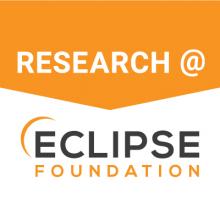There is an often-told business story about how IBM "lost" the computing market to Microsoft. And it's true that by the 1990s, more software would be written for Microsoft PCs than for IBM mainframes. But that did not mean that the amount of software on IBM mainframes began to shrink - it continues to expand to the present day.
Already there is more software built on web technologies than on desktop technologies. But just because the web is growing faster than the desktop, that doesn't mean that the desktop is going to shrink. The Eclipse desktop still has real advantages over web alternatives, and those advantages will persist for a very long time.
Once we have explored the long-term advantages of the Eclipse desktop, we'll look at some of the tooling challenges it faces. If you graduated college in the year 2000 and immediately joined IBM then you made it just in time for the 1.0 release of Eclipse in 2001. You had 0 years of experience, and learned the ropes in a world of CVS, Java, and a young internet. The senior engineers with 20 years of experience got their start in 1980, when Fortran began to lose its first-place spot to Pascal.
Now that Eclipse has 20 years of experience under its belt, it faces young developers who are learning the ropes in a world of GitHub and hot-reloading web frameworks, possibly with java Minecraft mods on the side. We will explore the barriers and opportunities for turning these developers into Eclipse IDE users and contributors.
At this point, we have established: 1) Why the Eclipse desktop IDE will continue to be important and 2) What the challenges will be to include the next generation of developers on that journey. This is where the fun part starts - saying "Yes, and..." to the eclipse desktop IDE.
We will present a system that can download and run the Eclipse IDE from your local cache of maven jars, without OSGi or p2. It doesn't require removing them, but it allows young developers to use and modify the IDE without learning the OSGi/p2 stack.
